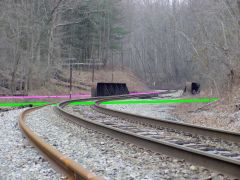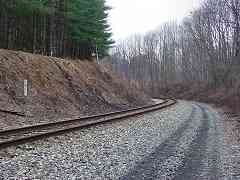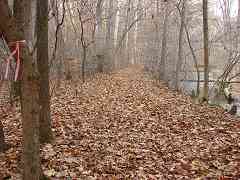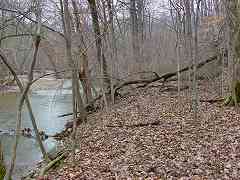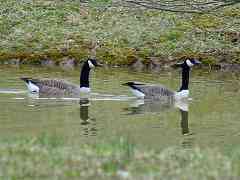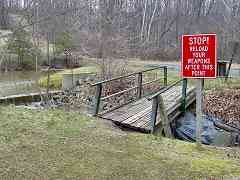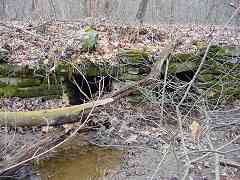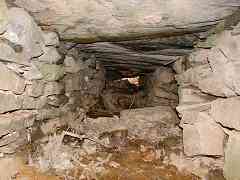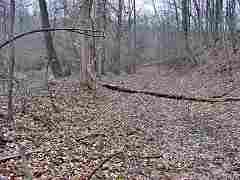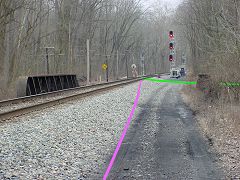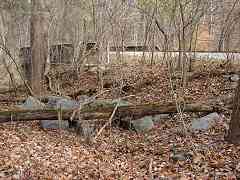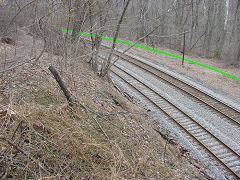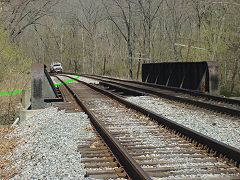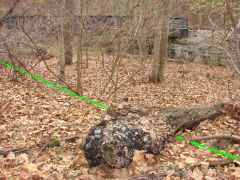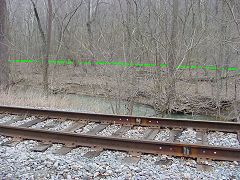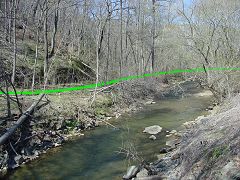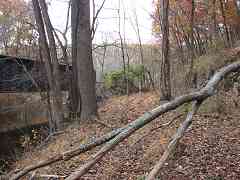|
Was Penitentiary Cut named because prison labor was employed, or because
workers would rather have broken rocks in the slammer than boulders here?
B&O avoided cuts like this in 1830 for the initial Old Main Line, and
instead religiously followed the bends of a nearby stream. As locomotives,
cars and trains quickly grew longer, the curves became a big headache, and
by 1838 the railroad had forged a new alignment to bypass the OML's most severe
curve, the one at Elysville (now Daniels).
The style of the nearby disused bridge suggests this cut was made during the
same time period. This cut is small by today's standards, but due to the
significant difficulty of stone cutting in a hand-tools-only era, B&O
undertook cuts for only the most extreme cases. The curve in this vicinity
was the OML's second most severe.
It is likely the cut was widened later, probably as part of the Hartman Tunnel
project around 1902.
| 
